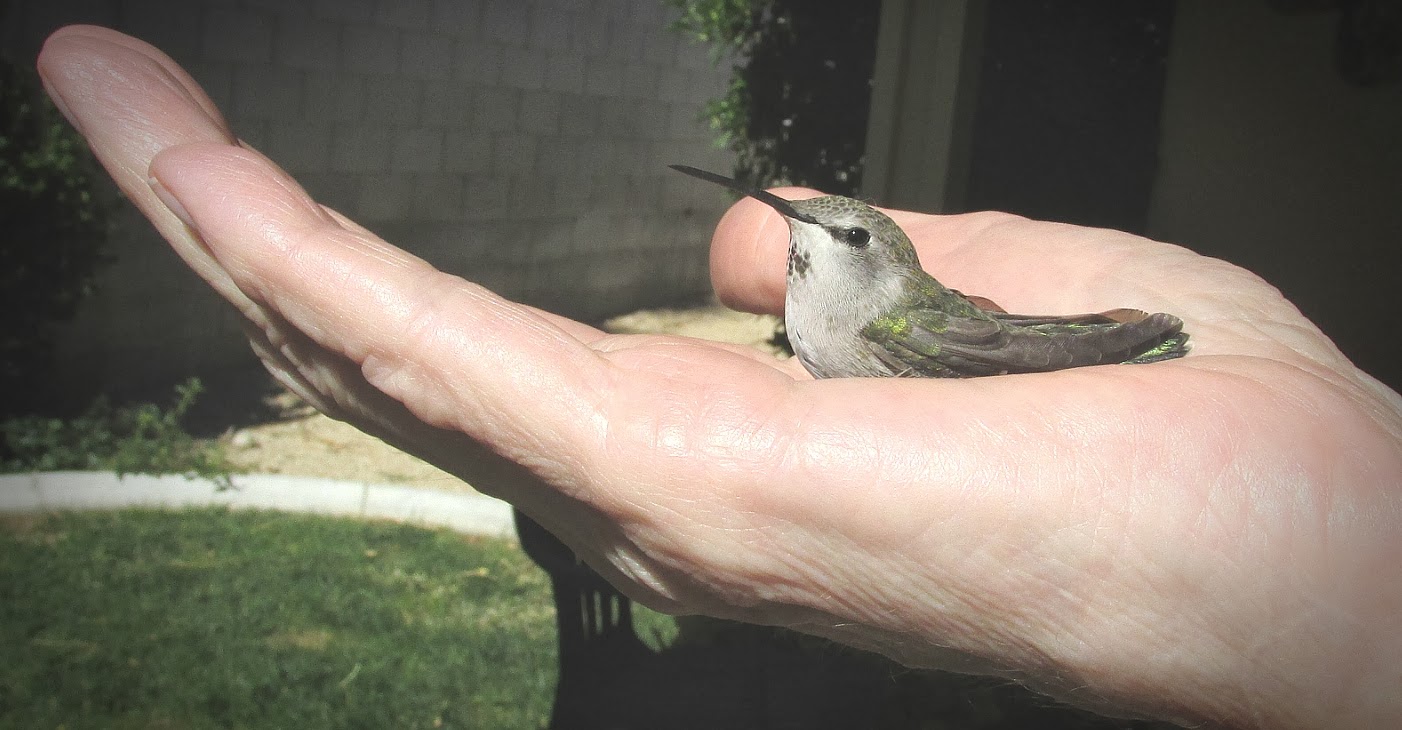Hummingbirds
that winter over in Las Vegas NV need to keep their energy levels up. During the
day it is necessary for them to gain weight in order to survive the cold, long
night of winter. In the depth of winter this may mean doubling their morning
weight. Yet winter also sees a lessening of flowers and insects that serve to
feed the birds, so feeders become even more important to them now than during
the warm summer months.
My
feeders get their first customers at dawn and the last ones just before it gets
truly dark, long after the sun has officially set. I try not to disturb them at
these times, since in the morning they are taking their first high-calorie food
of the day and in the evening they are taking their last feeding that will have
the get them through the night.
When we
had three days of chilly rain here in Las Vegas my feeders were really hopping.
I know for people living in other parts of the country temperatures in the 40s
don’t sound so bad, but we’d been having temperatures in the upper 60s in the
weeks before. The change was hard on me and the birds both. I handled it by
turning on my furnace. The birds handled it by consuming more feed than normal.
 |
| Anna's Hummingbird female watching 'her' north side feeder. My neighbors bottle brush is her favorite place to sit and keep an eye out for intruders. |
I
watched as my female Anna’s hummingbird came to the north side feeder in the
rain. All the while she drank she had to keep ruffling her feathers to shake the
rain off. Sometimes she stayed on the perch for awhile just to conserve energy
before she took her next drink.
 | |
| She's trying to keep the rain off. Notice the rain drops on the feeder. |
 |
| Waiting for the sun to come out, early morning after the rain finally stopped. |
 |
| Juvenile male Anna's getting a drink where it's dry. Notice the pink feathers to the right of his eye. |
During
the rains only the Anna’s hummingbird came to my feeders. After the rains were
over, on November 25, I had my front door open to let in the welcome sunshine
and listen to the bird songs. I could hear the whistle of the Costa’s
hummingbird. I hadn’t heard that sound for weeks. I thought for sure the Costa’s
had left me for the Colorado River, where winter temperatures average about ten
degrees warmer than here in Las Vegas. I kept listening, trying to decide if I
were mistaken, but no; it was the Costa’s song.
Then
that afternoon I was sitting on my couch talking on the phone, binoculars and
camera within reach, when I saw the Costa’s come to the feeder. I grabbed the
binoculars and looked to be sure that was what I was seeing. Then I grabbed the
camera and with one hand pointed it at the bird, hoping for a usable picture.
The lighting wasn’t the best, so I had to use a bright filter to bring out the
details, but the picture is proof that my Costa’s is definitely still with me,
putting up with the cooler temperatures as we move into winter in Las Vegas.
 |
| Proof that my Costa's male is still with me! |






